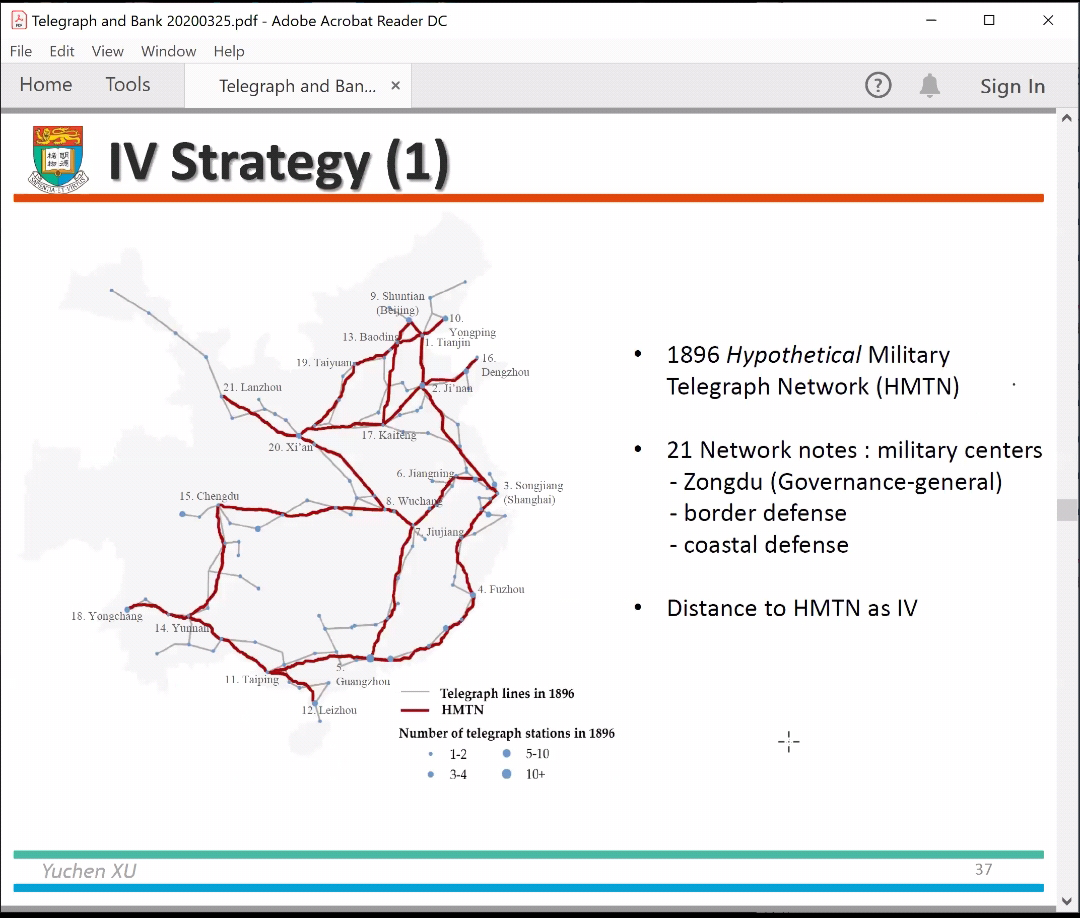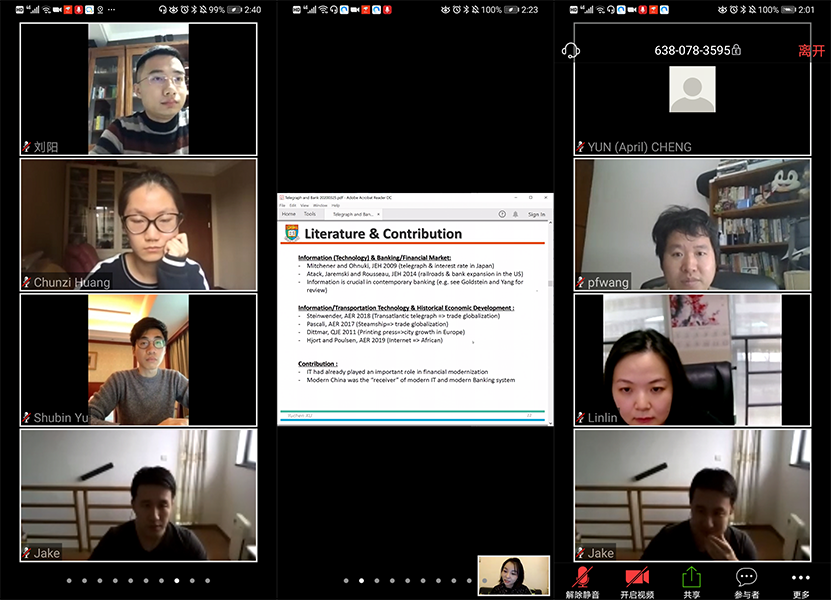On March 25, 2020, Yuchen XU, currently a PhD candidate of Finance at The University of Hong Kong (HKU), and soon-to-be a Finance Faculty of our own, kicked off the PHBS online seminar series with a very interesting talk on how telegraph, as a milestone of informational technology, boosted modern banking development in a historical context.

It is commonly believed that information technology is a potential growth engine for the development of modern banking system. The advance of information technology (e.g., telecommunication, computer, and internet) mitigated the information costs arising from the physical distance barriers and enable banks to expand their businesses to a broader geographical scale. Empirical evidence of such findings, however, remains scant. This is in part due to the difficulty of gauging the operation of the multidimensional information technologies, and partly due to the reciprocal relationship between information technologies and banking development which makes the identification difficult.
In this study, Xu and her coauthors take up the challenge and focus on the role of telegraph, which in the mid-19th century constituted a truly revolutionary advance in information technology, as a key driver for banking development in China. Compared to the traditional courier channels of ships and horses, the telegraph sharply improved the efficiency of long-distance communications, shortening the transit time from months (via courier routes) to hours. Coming long before the invention of multidimensional information channels of recent decades, the telegraph in the 19th century presents a singular ‘FinTech’ that allows the authors to better capture the effect of information technology on banking development.

Drawing upon over 1,600 local gazetteers, the authors manually collected information on the locations of all the telegraph stations and banks (and branches) established in China between 1880 and 1936. They covered all the 287 prefectures (of the 18 provinces) in China proper. To address potential endogeneity concern, the paper employs an instrumental variable approach which is based on the historical fact that the early telegraph lines were designed to link military centers. With the help of geographic information system, the authors generated hypothetical least cost path that linked the 21 military centers. Accordingly, the shortest distance of a prefecture to the hypothetical military trunk line is used to instrument the distribution of telegraph stations. Both the OLS and the IV-2SLS estimations show a significantly positive effect of the telegraph on banking development.
Lastly, the authors show us the channels through which the positive effect of telegraphs on banking development takes place. First, the telegraph enabled banks to expand their branches to a broader geographic scale by increasing inter-regional information flow and stimulating real economic activities. The authors applied textual analysis to Shen Bao (Shanghai News)—the largest national newspaper at the time and found that the telegraph improved market transparency. Second, the telegraph is shown to enlarge the size of the local commercial chambers, stimulated the establishment of industrial firms and boosted the urbanization, which in return created financial demands.
This is the first time PHBS hosts an online seminar and it went very well. All participants including 30 faculty members and 12 Ph.D. students were actively engaged. Online interactions, either by directly talking to the presenter or via ‘chat message’, were convenient and smooth. Throughout the seminar, many interesting and important questions were raised by our faculty and Miss Xu gave very good answers to them.
By Ma Linlin, Associate Professor

















